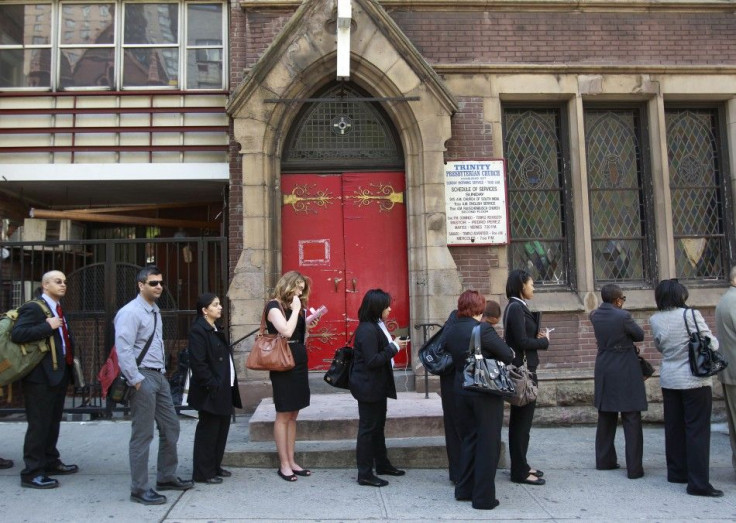US Jobless Claims Fall To 365,000, Biggest Weekly Drop In Nearly A Year

Fewer Americans than expected filed for jobless benefits last week, which came as a welcoming relief as investors held their breath and waited for Friday's jobs report numbers to come out.
In the week ended April 28, applications for unemployment insurance payments decreased by 27,000 from the previous week's upwardly revised figure of 392,000, to 365,000, according to data from the Labor Department that was issued on Thursday in Washington. That was the biggest weekly drop since early May last year and came in below market expectations for a 380,000 reading.
We believe some of the recent rise in claims is due to negative weather effects, which may have pushed claims lower in prior months and higher in recent weeks, Michael Gapen, an economist at Barclays Research, wrote in a May 3 research note to clients. The timing of the Easter holiday may also have been a factor in sending recent claims figures higher relative to what seasonal factors would expect.
The recent trend of upward revisions continued, however. Thursday's report marked the 13th consecutive week that the level of claims has been revised higher.
The four-week moving average, which normally provides a better indication of the underlying trend in labor markets than the weekly number of jobless claims, was 383,500, an increase of 750 from the previous week's downwardly revised average of 382,750 for first-time benefit applicants.
Jobless claims are important because they give you a sense of where we are headed, and the improvement in the jobless claims is encouraging for the economy, Lance Roberts, chief strategist at StreetTalk Advisors, said before the report.
The number of people filing for benefits after an initial week of aid decreased by 53,000, to 3.28 million in the week ended April 21.
The continuing claims figure doesn't include the number of Americans receiving extended benefits under federal programs.
The four-week moving average for the week ended April 21 fell by 18,250, to 3.30 million, from the preceding week's revised average of 3.32 million.
Nonfarm Payrolls
Job numbers for April are expected Friday morning and could show a somewhat soft economic outlook for the job market as an unseasonably mild winter pulled hiring activities forward into the winter at the expense of the spring.
The key number to watch is private-sector hiring, which according to the ADP report will have added only 119,000 jobs last month. Economists polled by Thomson Reuters had forecast a gain of 177,000 jobs.
Payrolls are estimated to have climbed last month by 170,000, after a smaller-than-expected 120,000 gain in March, according to the median forecast of 73 economists surveyed by Reuters.
Job gains are of great importance because they lead to income growth, and that supports consumer spending, which accounts for more than 70 percent of the U.S. economy.
Currently, the U.S. still has about 13 million people who are unemployed, against 142 million employed people, and 88 million who are out of the labor force, data from the Bureau of Labor Statistics showed.
Economists also expect Friday's report to show April's unemployment rate holding at a three-year low of 8.2 percent as the labor participation rate continues to slip.
The pace of job creation is central to President Barack Obama's re-election chances in November, when the economy is likely to be the top issue for voters.
If the job numbers start to get weaker, that's going to throw fuel into the Romney camp, Roberts said. Historically speaking, no president has ever been elected to a second term when unemployment has been above 8 percent.
Stock futures rose. The S&P 500 futures gained 2 points, to 1,399.50, while the Dow Jones Industrial Average futures added 16 points, to 13,220.
© Copyright IBTimes 2024. All rights reserved.






















